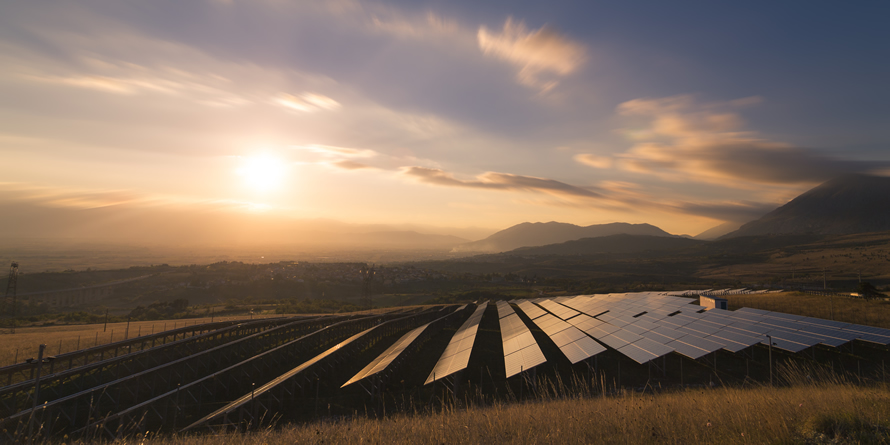Posted on: 18/04/2019
Following the closure of the Feed-in Tariff (FiT) Scheme this March, Head of Renewable Sales, Chris Smith assesses what’s next for generators and how the PPA landscape will look moving forwards.
The growth in UK renewable generation has clearly been a success story, supporting significant reductions in carbon emissions. However, the first of a number of industry changes which will impact existing generation sites - as well as new build projects – came into effect recently.
Namely, this was the closure of the FiT scheme. This closed to new applications after 31st March 2019, excluding those projects that met the criteria for time limited extensions and grace periods.
Original objectives:
The Department of Energy and Climate Change introduced the FIT scheme in April 2010, under the Energy Act 2008, in line with EU 2020 renewable energy targets and UK 2050 decarbonisation targets.
The scheme outlined five key objectives to drive increased renewable generation capacity, which were:
1) Encourage deployment of small-scale (up to 5MW) low-carbon electricity generation
2) Empower people and give them a direct stake in the transition to a low-carbon economy
3) Assist the public take-up of carbon reduction measures
4) Foster behavioural change in energy use
5) Help develop local supply chains and drive down energy costs
Was the scheme considered a success?
There are pros and cons to weigh up for every subsidy initiative, and the FiT scheme is no different. In many ways it can be seen to have delivered on its objectives, although there has been difficulty in assessing the success it has had in developing local supply chains and driving key behavioural changes.
It set out to provide a simple framework to encourage investment whilst preventing overcompensation. However, the different tariff bands and accreditation according to technology type, created added layers of complexity for generators during its roll-out.
At a high-level, the FiT scheme demonstrated the importance of subsidies in helping to bring about and support the development of emerging technologies and business models. Subsidies are often favourably viewed as having increased innovation, lowered costs and diversified the energy mix, all of which has improved the UK’s energy system resilience.
However, in 2015, the Government concluded that the FiT scheme was more expensive than originally anticipated and sought to bring it to a close.
What’s next?
The closure of the FiT scheme represents a real juncture for renewables, as the first withdrawal of a major subsidy scheme. On top of that, the timing couldn’t be worse for generators. While this scheme closure is taking place, they are also facing challenging proposals from the Targeted Charging Review consultation, as well as Ofgem’s ‘minded to’ approach to adopt the proposed changes to the Balancing and Settlement Use of System (BSUoS) element of Embedded Benefits. At a recent roundtable event SmartestEnergy hosted for generators, the reoccurring theme that presented itself was concern over the uncertainty caused by the proposals, which has been dampening investment appetite and the future outlook for renewable generators country-wide.
Despite this, the resilience of small-scale renewables generators is clear. They are poised to adapt to the changing renewables landscape post-FiT by embracing alternative Power Purchase Agreement (PPA) structures, including routes to market via Corporate PPAs, as businesses are encouraged ‘go green’ and commit to higher standards of reporting - such as the new Streamlined Energy and Carbon Reporting (SECR) Framework - which will see more detailed carbon reports submitted by corporates in 2020.
Furthermore, this is creating an opportunity for generators to be smart with their selling decisions. By timing these decisions appropriately, they are able to optimise their value from power price volatility. This, combined with PPA structures which allow generators to spread risk, may provide a sliver lining for those that are worried about the many subsidy cuts and charges being scheduled.
About the author
Chris joined SmartestEnergy’s Renewables team in 2017 from Danish energy trading company Neas Energy. He works with generators to develop solutions to help them maximise returns in a changing environment for renewable projects. Chris began his career in the energy sector in 1996 with Eastern Natural Gas. He went on to work as a Generation Services Senior Business Development Manager at RWE npower, developing PPA solutions for customers. He has also worked on the supply side with industrial and commercial users. His role as Business Development Manager at Neas saw him build its UK PPA and CHP portfolio from market entry. Chris has a BA in Business Studies from De Montfort University, Leicester.

 United States
United States Australia
Australia







